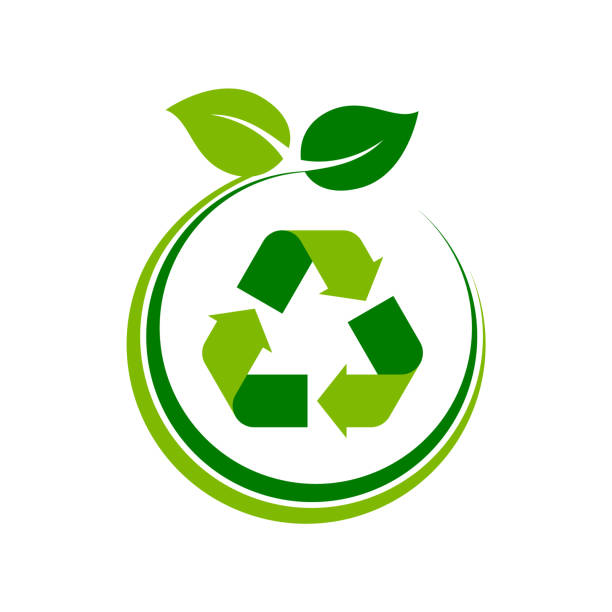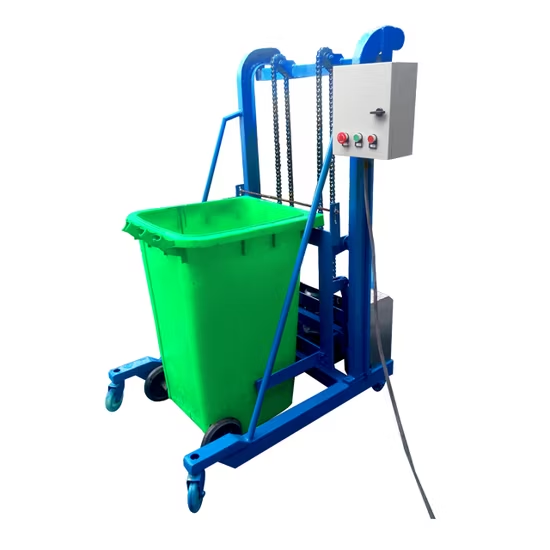How It Works
AI-driven recommendations for effective waste segregation and improved recycling rates. Our system uses advanced algorithms to analyze waste composition and provide tailored recommendations for segregating waste into different categories, such as recyclables, organic waste, and hazardous materials. This ensures that waste is properly sorted and processed, reducing contamination and improving recycling rates.

The image above shows an AI-driven waste segregation system analyzing waste composition. The system is depicted as a high-tech machine equipped with sensors and cameras that scan and identify different types of waste. The machine uses advanced algorithms to analyze the composition of the waste and provide recommendations for segregating it into different categories. This process involves identifying materials such as plastics, metals, paper, and organic waste, and sorting them into separate bins. The AI-driven system ensures that waste is properly sorted and processed, reducing contamination and improving recycling rates. By using real-time data and machine learning, the system can continuously improve its accuracy and efficiency. This innovative approach to waste segregation exemplifies how technology can be leveraged to create more sustainable and efficient waste management practices. The system not only helps reduce the amount of waste that ends up in landfills but also promotes recycling and proper waste disposal. This image highlights the importance of using AI-driven technology to improve waste segregation and contribute to a more sustainable future.
Benefits
- Improved recycling rates
- Reduced contamination
- Lower operational costs
- Enhanced environmental sustainability
- Better waste management practices
Photo Gallery

The image above shows an AI-driven waste segregation system in action at a recycling facility. The system is depicted as a series of conveyor belts and sorting machines that process and separate different types of waste. The AI-driven technology uses sensors and cameras to scan and identify materials such as plastics, metals, paper, and organic waste. The system then sorts the waste into separate bins for further processing. This innovative approach to waste segregation ensures that materials are properly sorted and processed, reducing contamination and improving recycling rates. By using real-time data and machine learning, the system can continuously improve its accuracy and efficiency. This image highlights the importance of using AI-driven technology to improve waste segregation and contribute to a more sustainable future. The recycling facility is equipped with advanced technology to process and recycle various types of materials, promoting environmental sustainability and reducing the amount of waste that ends up in landfills. This scene exemplifies the benefits of integrating AI-driven technology into waste management practices to create a more efficient and sustainable system.

The image above shows an AI-driven waste segregation system analyzing household waste. The system is depicted as a high-tech machine equipped with sensors and cameras that scan and identify different types of waste generated by households. The machine uses advanced algorithms to analyze the composition of the waste and provide recommendations for segregating it into different categories, such as recyclables, organic waste, and hazardous materials. This process ensures that household waste is properly sorted and processed, reducing contamination and improving recycling rates. By using real-time data and machine learning, the system can continuously improve its accuracy and efficiency. This innovative approach to waste segregation exemplifies how technology can be leveraged to create more sustainable and efficient waste management practices. The system not only helps reduce the amount of waste that ends up in landfills but also promotes recycling and proper waste disposal. This image highlights the importance of using AI-driven technology to improve waste segregation and contribute to a more sustainable future.

The image above shows an AI-driven waste segregation system at a commercial facility. The system is depicted as a series of conveyor belts and sorting machines that process and separate different types of waste generated by businesses, such as restaurants, shops, and offices. The AI-driven technology uses sensors and cameras to scan and identify materials such as plastics, metals, paper, and organic waste. The system then sorts the waste into separate bins for further processing. This innovative approach to waste segregation ensures that materials are properly sorted and processed, reducing contamination and improving recycling rates. By using real-time data and machine learning, the system can continuously improve its accuracy and efficiency. This image highlights the importance of using AI-driven technology to improve waste segregation and contribute to a more sustainable future. The commercial facility is equipped with advanced technology to process and recycle various types of materials, promoting environmental sustainability and reducing the amount of waste that ends up in landfills. This scene exemplifies the benefits of integrating AI-driven technology into waste management practices to create a more efficient and sustainable system.


